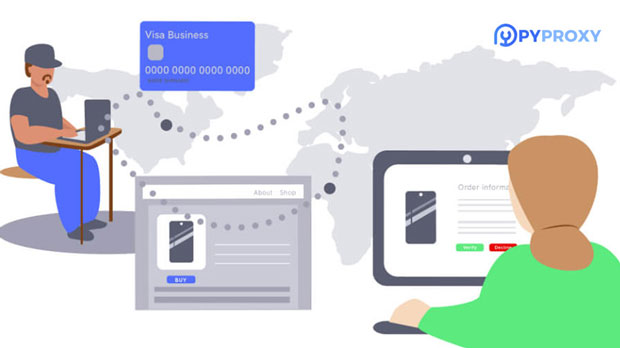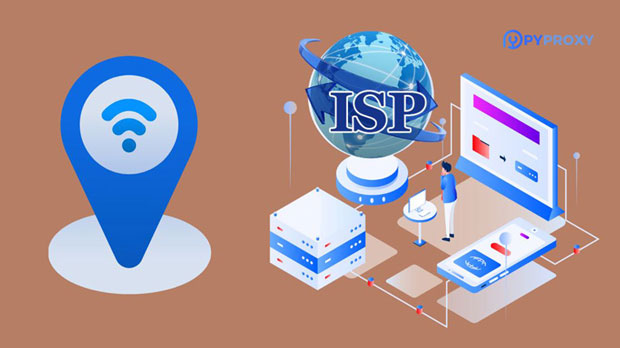How do SOCKS5 proxies maintain efficient transmission in different network environments?
socks5 proxy technology is widely used to ensure private, secure, and efficient data transmission across different network environments. It offers several advantages over traditional proxy protocols, especially when dealing with complex network structures or unstable internet connections. The SOCKS5 protocol allows for a higher degree of flexibility in handling various traffic types, from web browsing to file sharing and gaming. This article explores how socks5 proxies maintain high transmission efficiency in diverse network conditions, focusing on key aspects such as speed, stability, and scalability. It will also cover the practical application of SOCKS5 in handling high-demand networks like corporate environments, mobile networks, and congested public networks. 1. SOCKS5 Proxy: Overview and Key FeaturesSOCKS5 (Socket Secure version 5) is a versatile and advanced protocol used for routing internet traffic through a proxy server. Unlike other proxies such as HTTP, SOCKS5 works at a lower level, at the transport layer, meaning it can handle all kinds of internet traffic, including HTTP, FTP, and even peer-to-peer (P2P) protocols. SOCKS5 provides enhanced privacy, better handling of complex network requests, and greater resistance to network congestion compared to other proxy types.One of its most important features is that it supports authentication, allowing users to ensure only authorized access. Furthermore, SOCKS5 does not modify packet headers, which makes it more efficient in handling different types of traffic. This is particularly useful in maintaining high transmission speeds and stability in various network environments, especially when the network conditions fluctuate.2. How SOCKS5 Improves Transmission SpeedSpeed is a crucial factor when considering any type of network optimization. SOCKS5 maintains high transmission speed by bypassing the bottlenecks that often occur with traditional proxies. Unlike HTTP proxies, which are tailored specifically for web traffic, SOCKS5 proxies handle all types of data without altering it, reducing the likelihood of delays or data processing errors.Furthermore, SOCKS5’s design ensures that the communication between the client and the proxy server remains as direct as possible. In networks where congestion is high, such as public Wi-Fi or mobile networks, SOCKS5 can offer improved transmission speeds by minimizing the overhead typically seen in other proxy types. It also supports UDP, a connectionless protocol, allowing for faster communication by skipping the error-checking processes that can slow down other protocols.Additionally, SOCKS5 proxies can work in tandem with techniques like load balancing and parallel connections, enabling them to distribute traffic more efficiently across the available bandwidth. This capability ensures that even in networks with variable speeds, SOCKS5 can maintain consistent performance.3. Enhancing Stability in Unstable NetworksIn unstable network environments, such as cellular networks or remote locations with poor internet infrastructure, maintaining a stable connection is a significant challenge. SOCKS5 is particularly beneficial in these situations due to its ability to handle network interruptions gracefully. By maintaining a persistent session between the client and server, even when there are temporary disconnections, SOCKS5 can resume data transfer without significant delays.SOCKS5’s ability to support both TCP and UDP protocols also plays a key role in ensuring stable data transmission. While TCP ensures reliable delivery with error checking and retransmission, UDP offers a faster, lightweight approach that’s suitable for real-time applications such as video streaming or online gaming. This dual support allows SOCKS5 to adapt to varying network conditions, providing stability even in environments with frequent latency spikes or jitter.Moreover, SOCKS5 proxies can leverage techniques such as automatic retransmission and error correction to maintain data integrity during transmission. This minimizes packet loss, ensuring that users experience fewer disruptions or data errors, even on unreliable networks.4. SOCKS5 Proxy in Corporate and Mobile Network EnvironmentsIn corporate environments, where networks are often large and complex, SOCKS5 proxies are used to ensure secure, efficient data transmission between different departments, remote offices, and external clients. SOCKS5's flexibility in handling different types of traffic makes it ideal for businesses that require high-performance networks for applications such as file-sharing, cloud computing, and VoIP services.SOCKS5 proxies can also improve network security by encrypting data traffic, preventing eavesdropping, and safeguarding sensitive information against potential cyber threats. This becomes especially important in corporate settings where confidentiality and data integrity are paramount.In mobile network environments, where bandwidth may be limited and network stability can be unpredictable, SOCKS5 offers a reliable solution. It helps overcome the limitations of traditional mobile network connections, ensuring that data can still flow smoothly even when signal strength or network quality fluctuates. The protocol’s ability to optimize data transmission also makes it beneficial for users in regions with poor infrastructure, where higher latency and packet loss are common.5. Handling Congested Public NetworksPublic networks, such as those found in cafes, airports, or hotels, are often congested and prone to slow speeds, especially during peak usage times. In these environments, SOCKS5 proxies can maintain efficient transmission by helping clients bypass throttling and network congestion issues.SOCKS5 proxies reduce the chances of packet loss and improve overall throughput by enabling traffic routing that minimizes delay. In congested networks, SOCKS5 can prioritize traffic to reduce latency and optimize bandwidth usage. For example, users can establish multiple parallel connections to different servers to distribute the traffic load more effectively, preventing any single connection from becoming a bottleneck.By minimizing the interference caused by heavy traffic and providing a more stable connection, SOCKS5 proxies enable users to experience a higher quality of service even in crowded and overloaded network environments.6. Scalability of SOCKS5 in Large-Scale Network DeploymentsScalability is another key benefit of SOCKS5. In large-scale network environments, where a high volume of users is accessing the internet through the same proxy server, it’s essential to maintain performance levels even as traffic increases. SOCKS5’s design allows for easy scalability, as it can handle large amounts of concurrent connections without significant degradation in speed or stability.For instance, in enterprise settings, SOCKS5 proxies can be deployed across multiple servers, using load balancing techniques to distribute incoming traffic evenly. This ensures that no single server becomes overwhelmed, maintaining a consistent level of performance regardless of how many users are connected.Additionally, SOCKS5’s flexible architecture makes it suitable for dynamic network topologies, enabling it to scale horizontally as the demand grows. This adaptability is crucial for businesses or organizations that anticipate rapid expansion and require a network solution that can grow with them.Conclusion: Maximizing Efficiency with SOCKS5 ProxyIn summary, SOCKS5 proxies offer a robust solution for maintaining high-efficiency transmission in diverse and challenging network environments. By leveraging advanced features like protocol support, error correction, and seamless integration with load balancing systems, SOCKS5 ensures consistent, high-speed, and stable data transfer across a range of conditions—from corporate environments to public networks and mobile networks.Whether for securing sensitive corporate data, improving mobile network performance, or ensuring a stable connection in high-traffic public areas, SOCKS5 stands out as a versatile and reliable tool for network optimization. Its ability to handle different types of traffic without significant overhead, along with its superior scalability, makes it an essential technology for modern network management.
2025-01-08

























































